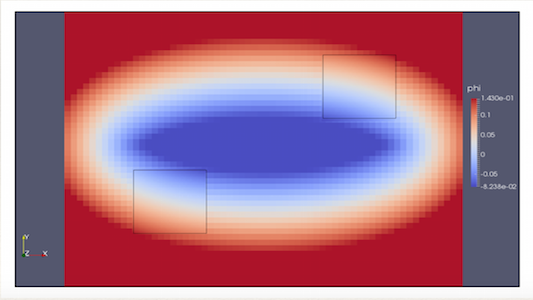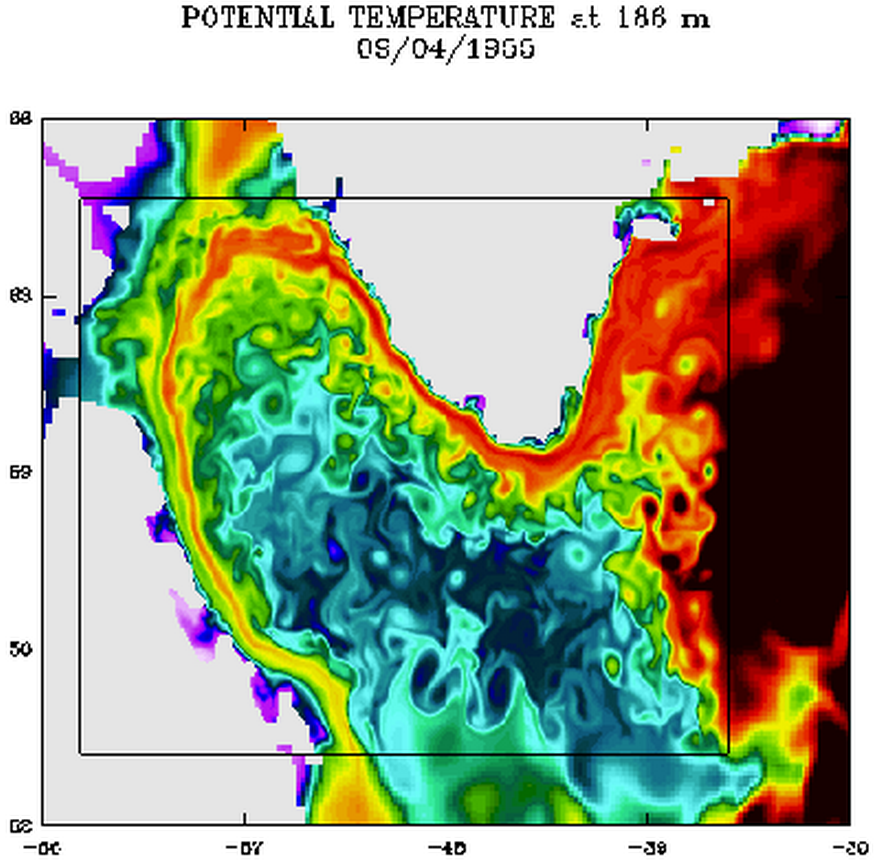Applications¶
AGRIF can be used in all finite difference models written in Fortran.
Here are some examples:
2. Eastward propagation of two eddy structures in an ocean (barotropic modon)¶
This example shows the eastward propagation of two eddy structures in a finite difference barotropic ocean model. The numerical procedure uses adaptive mesh refinement with two levels of refinement. The coarse grid has a resolution of 25 km and covers the whole domain (1600 km x 1600 km). The fine grids have a resolution of about 6 km (refinement ratio = 4), and are located only where necessary, in order to achieve a given accuracy everywhere in the domain.
The rectangles on the plots indicate the locations of the fine grids (which mostly follow the eddy structures).
3. Potential temperature in the Labrador sea¶
This example shows the results after the integration of AGRIF in an ocean model for the simulation of circulation in the Labrador sea. The coarse grid covers the whole North Atlantic ocean and has a resolution of 1/3 degree. A grid refinement is done in the Labrador sea with a refinement factor of 5.
The horizontal turbulence is then better represented and the problems of too deep convection appearing in models of low resolution are limited. The following movie shows the evolution of the potential temperature.
The ocean model OPA (Océan Parallélisé), developed at LOCEAN. Simulations have been made by Jérome Chanut (LEGI/CNRS Grenoble France).
4. Surface currents in the bay of Los Angeles¶
In this example, AGRIF has been included in an ocean model in order to reach a very high resolution in the bay of Los Angeles, in order to study the transport of sediments and pollutants. The movie represents the surface temperature on the root grid resulting of a series of embedded grids of increasing resolution.
The ocean model, ROMS, is developed at UCLA and Rutger’s University. Simulations were made by Patrick Marchesiello (UCLA).




